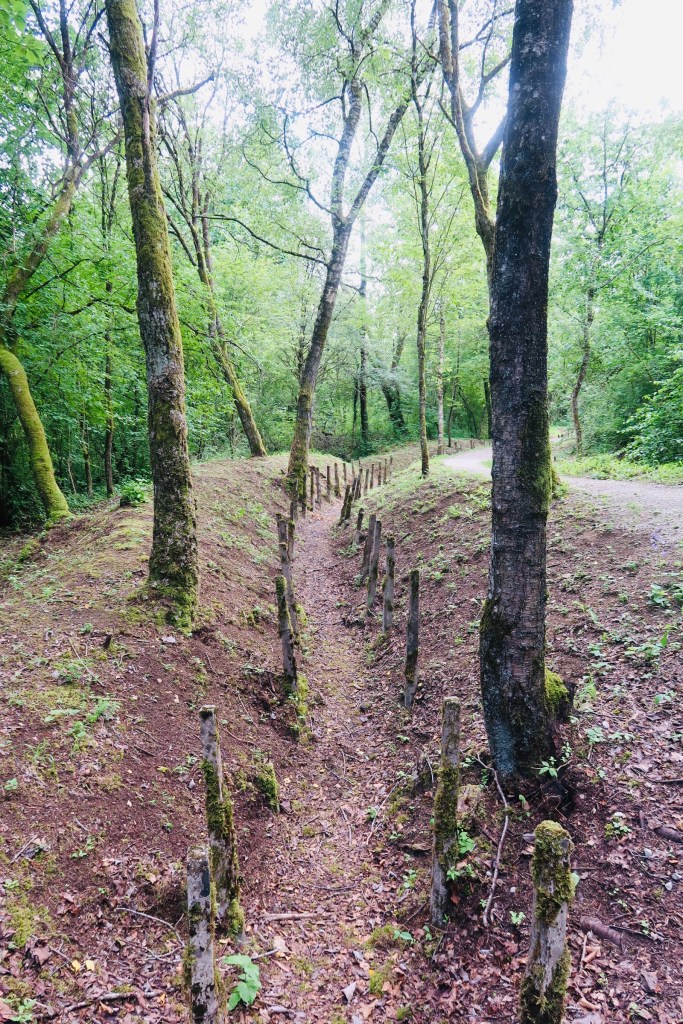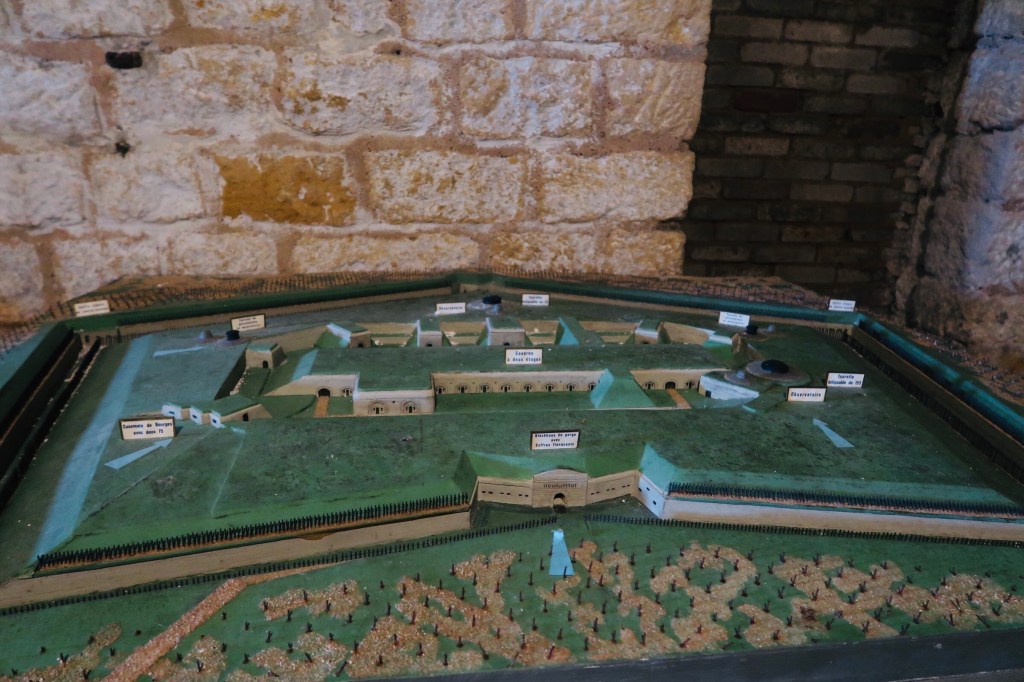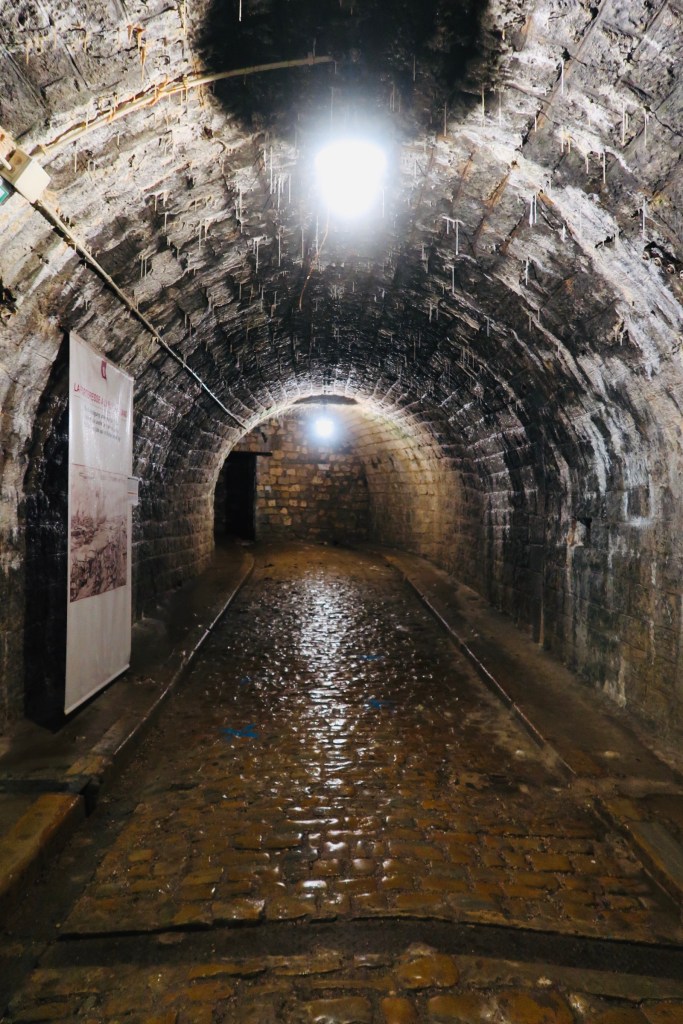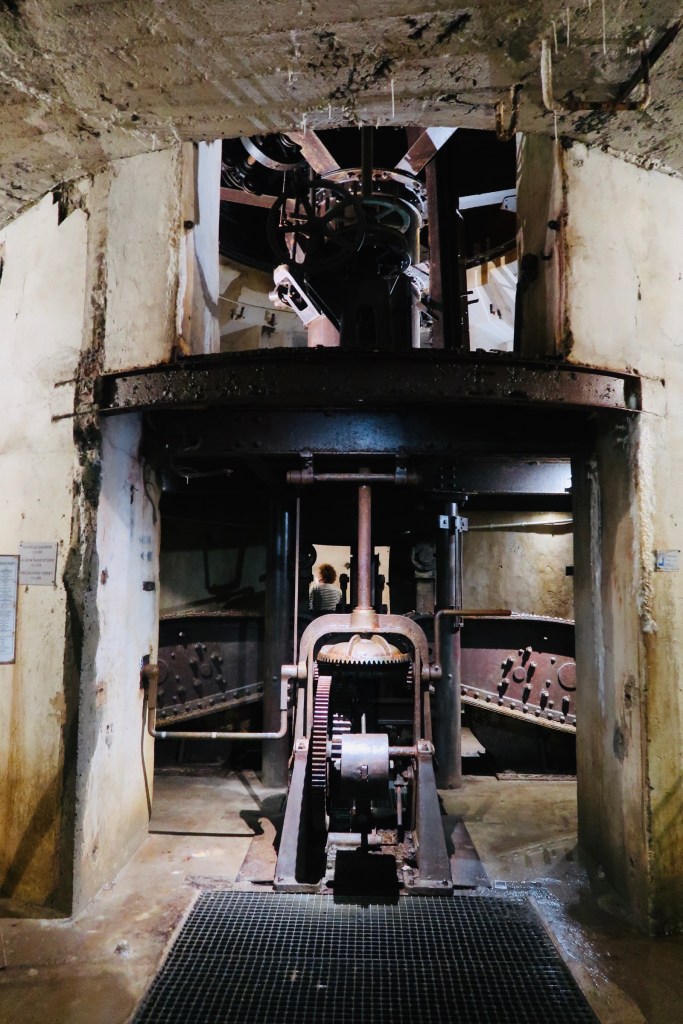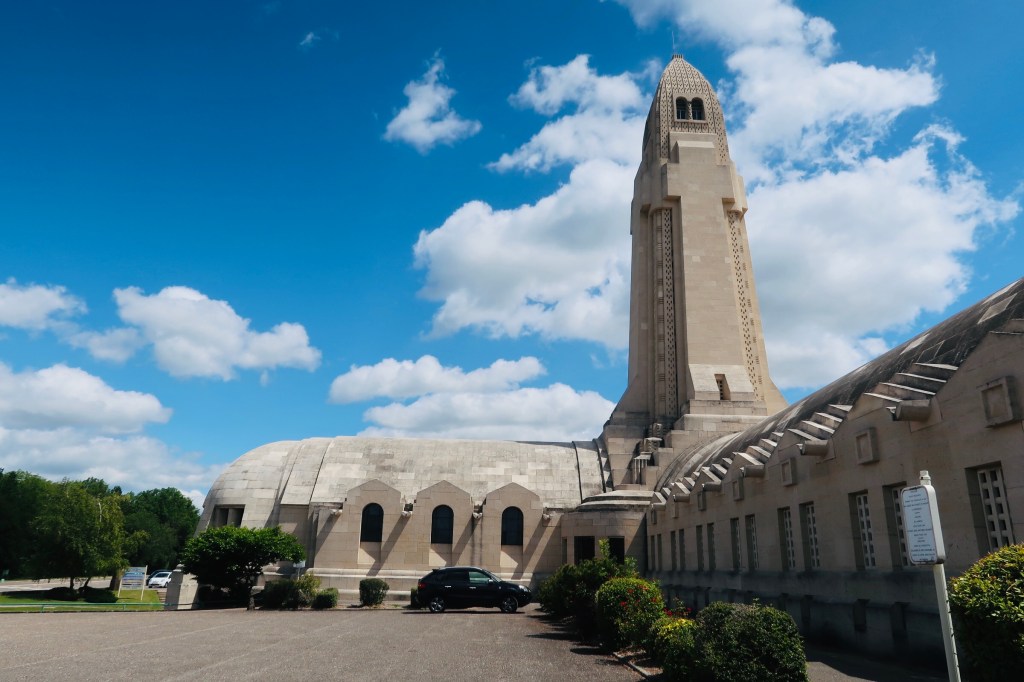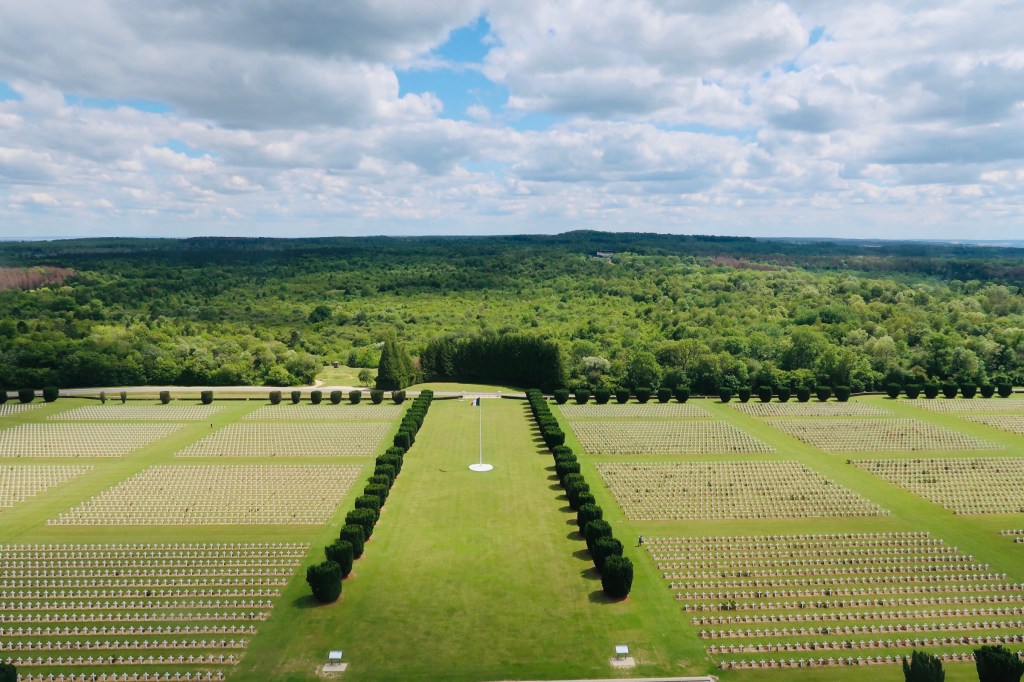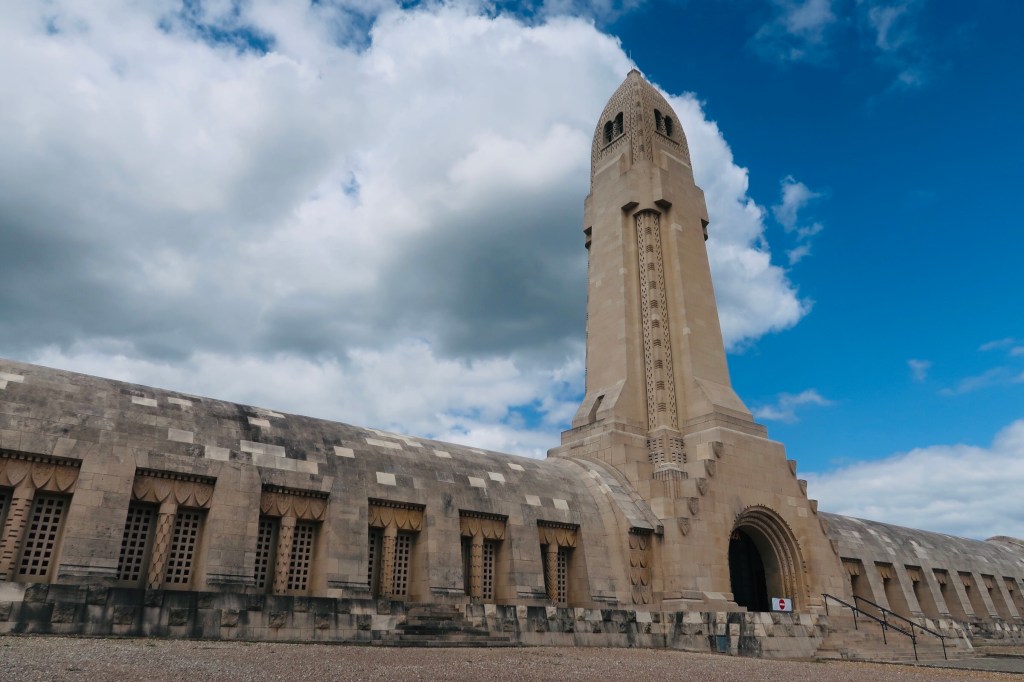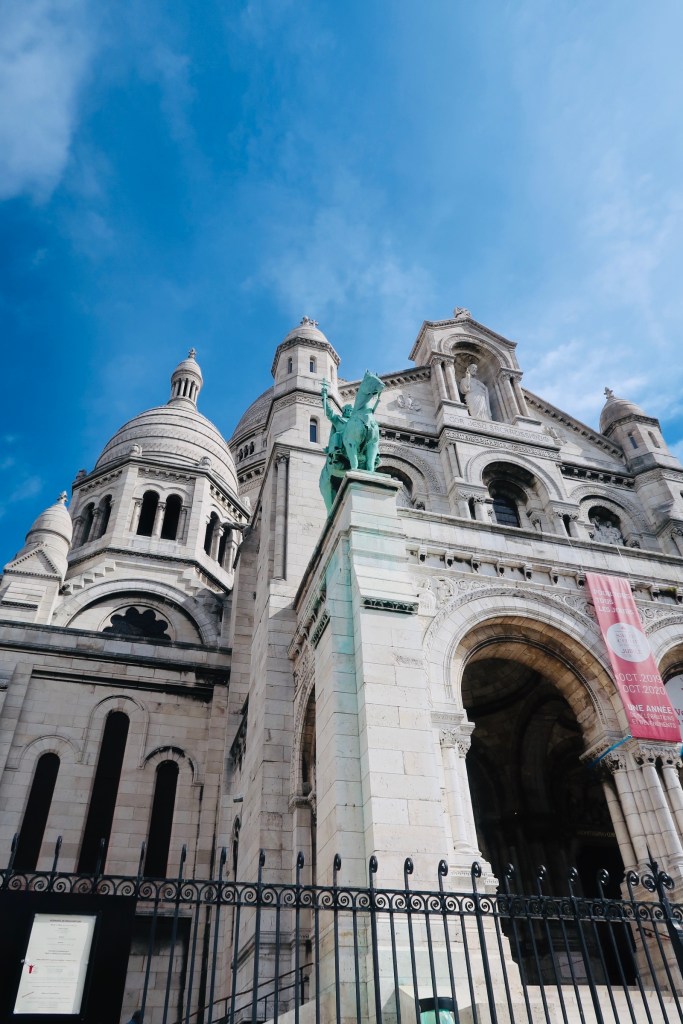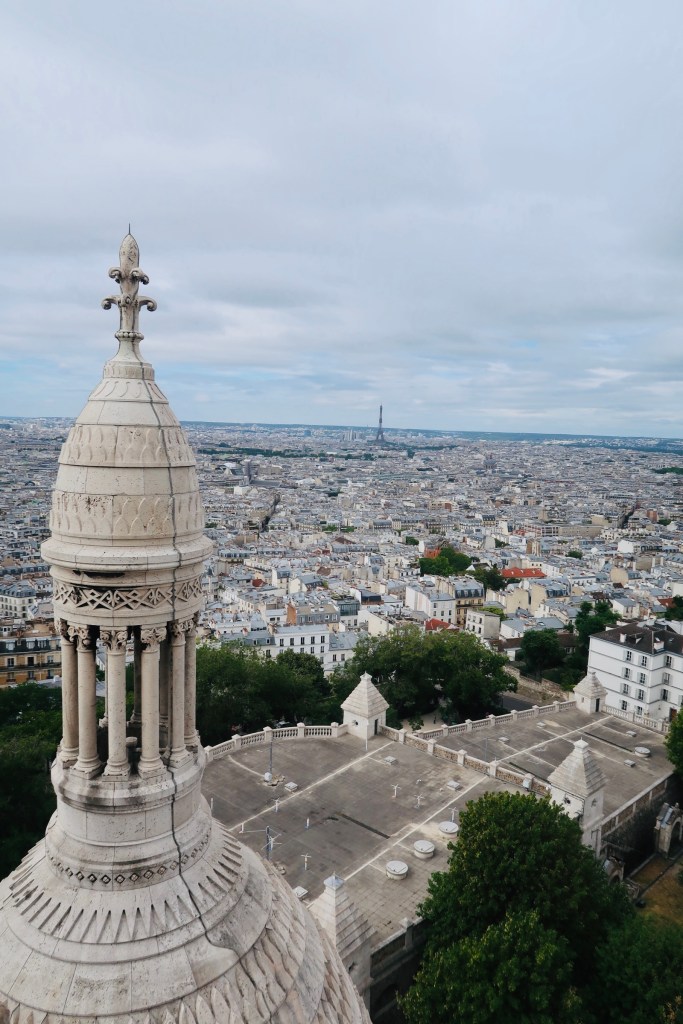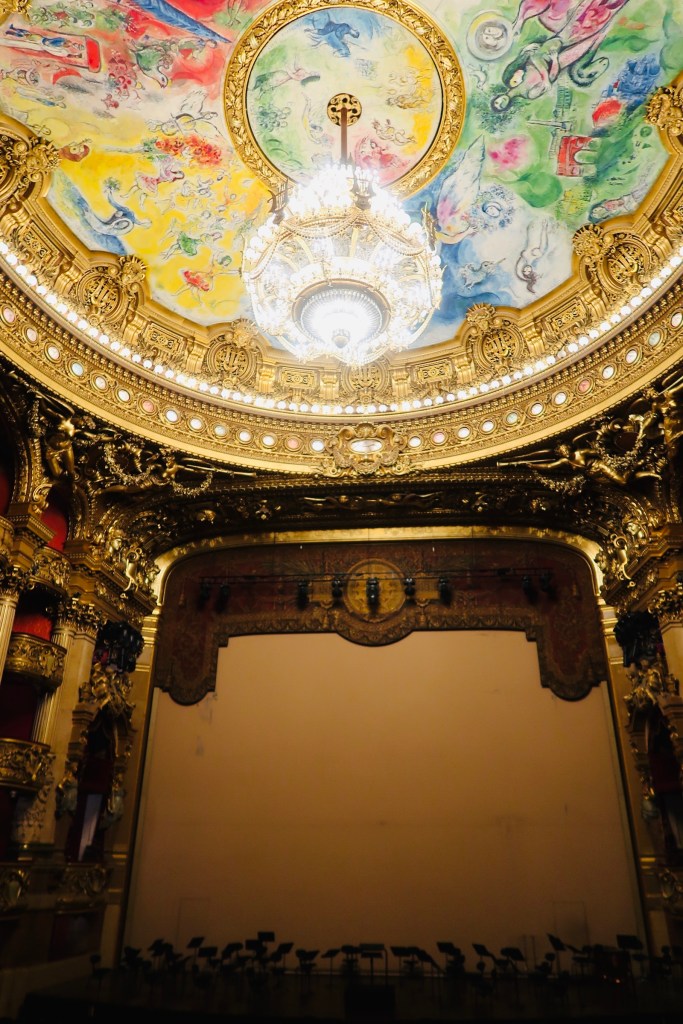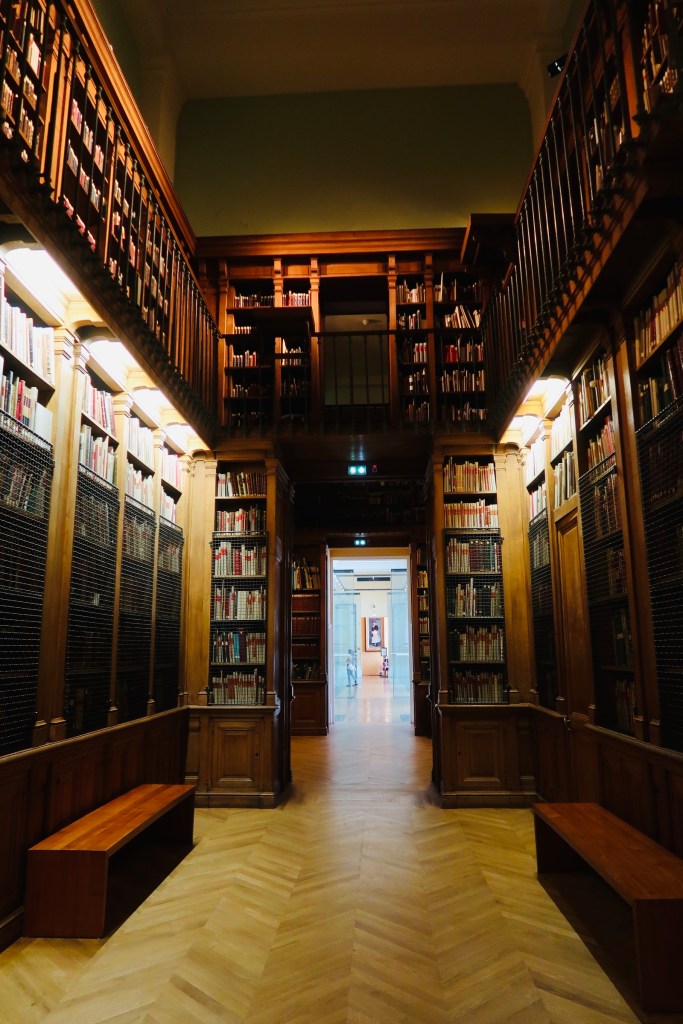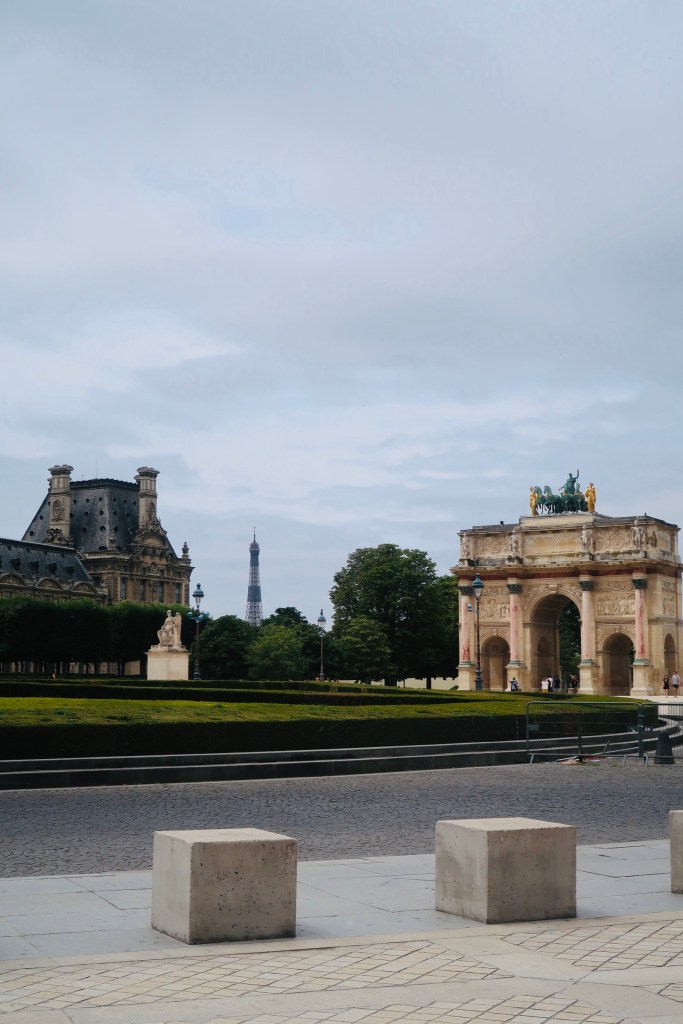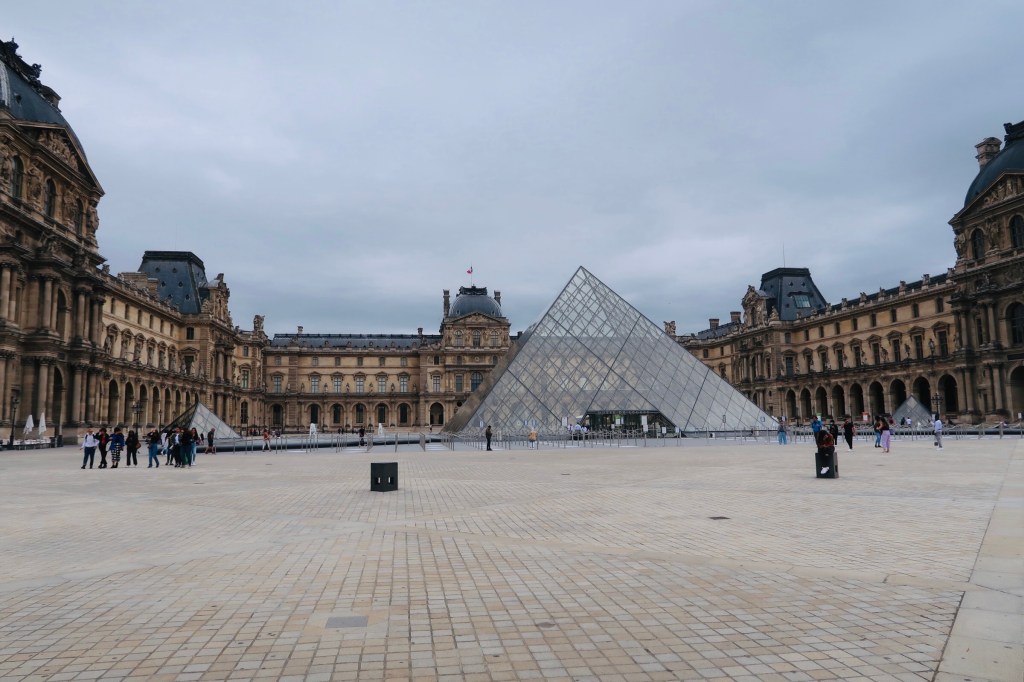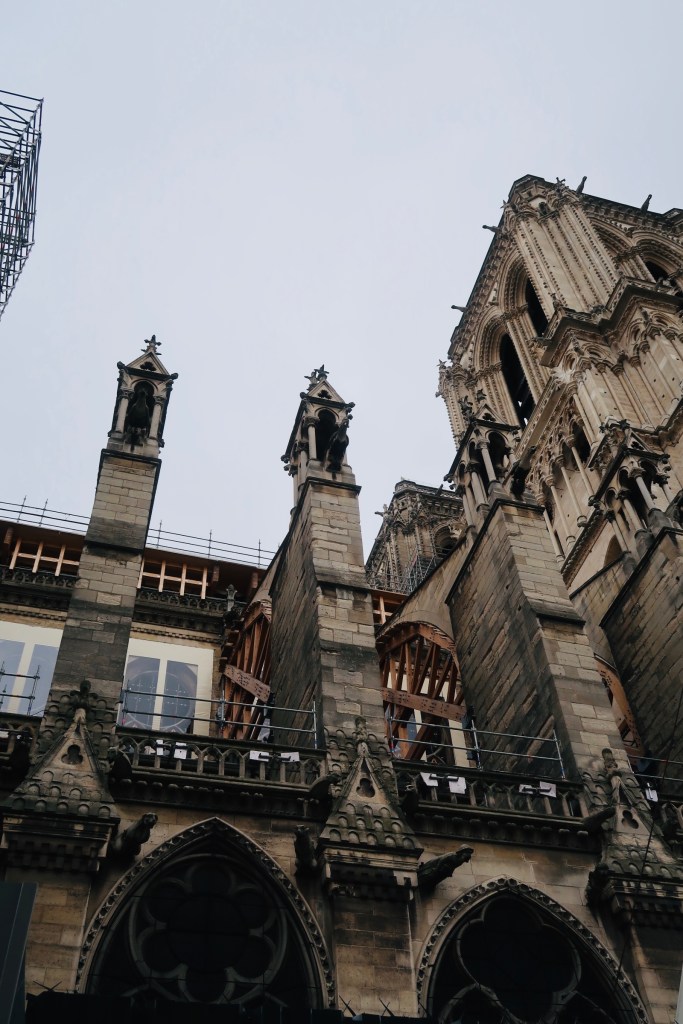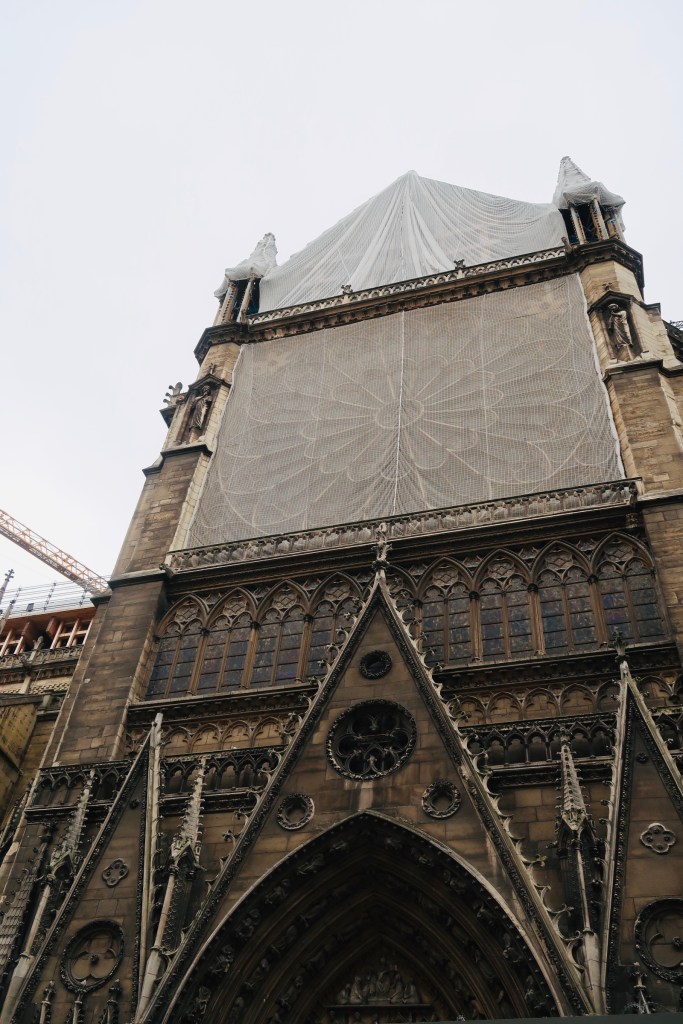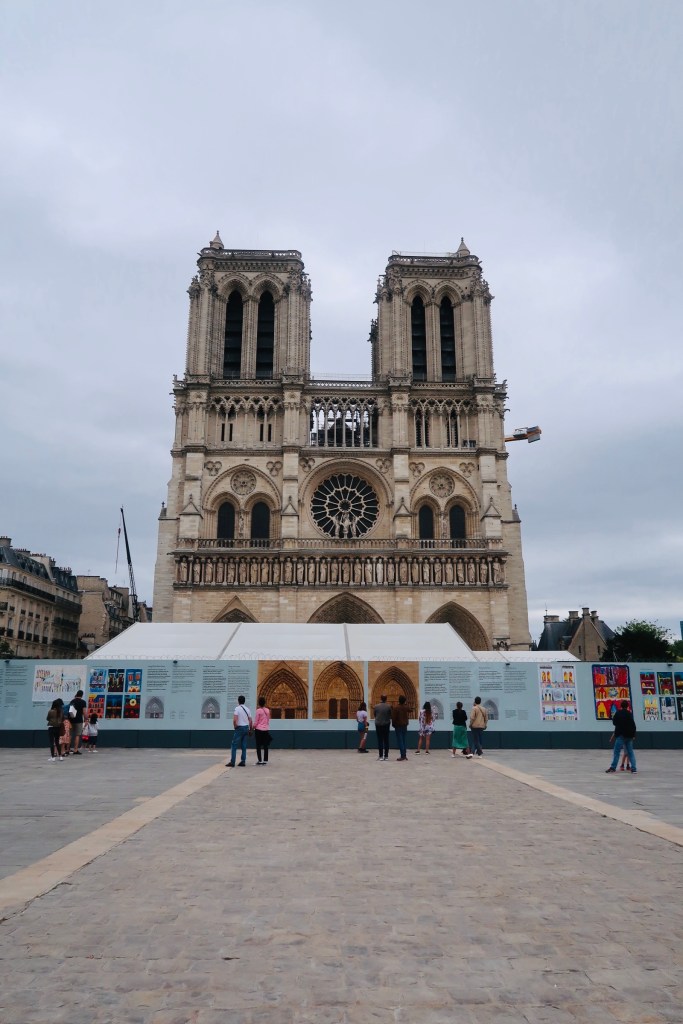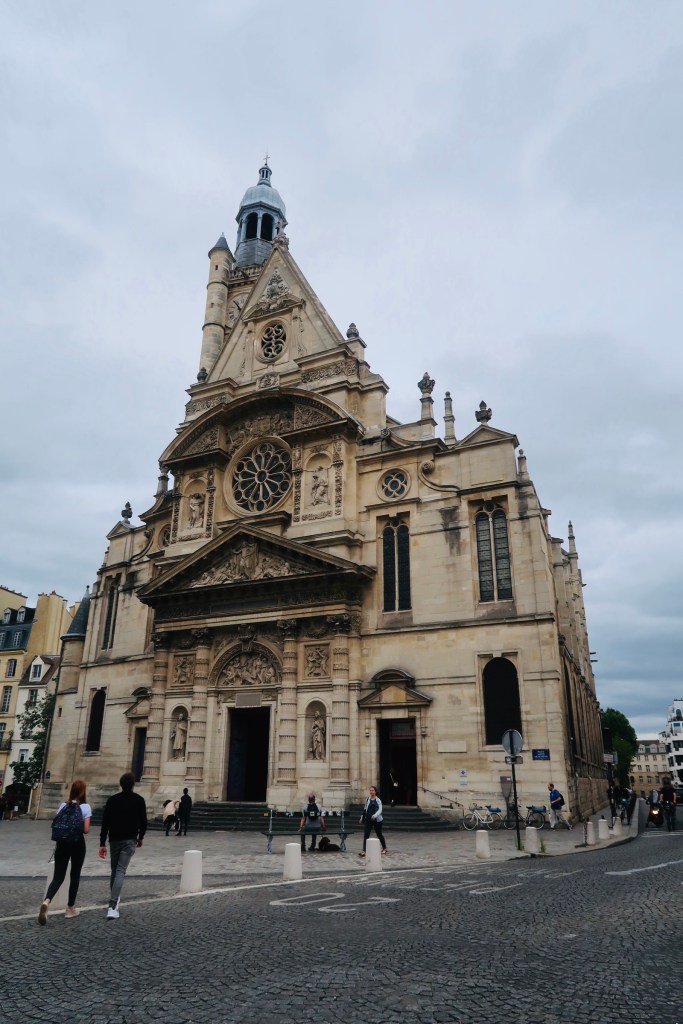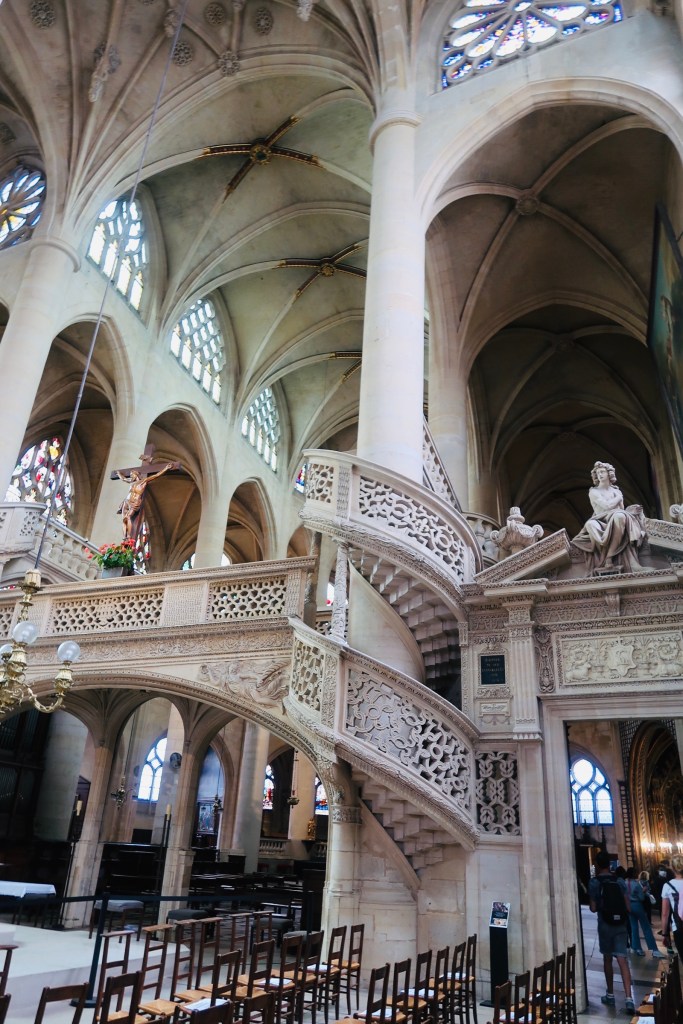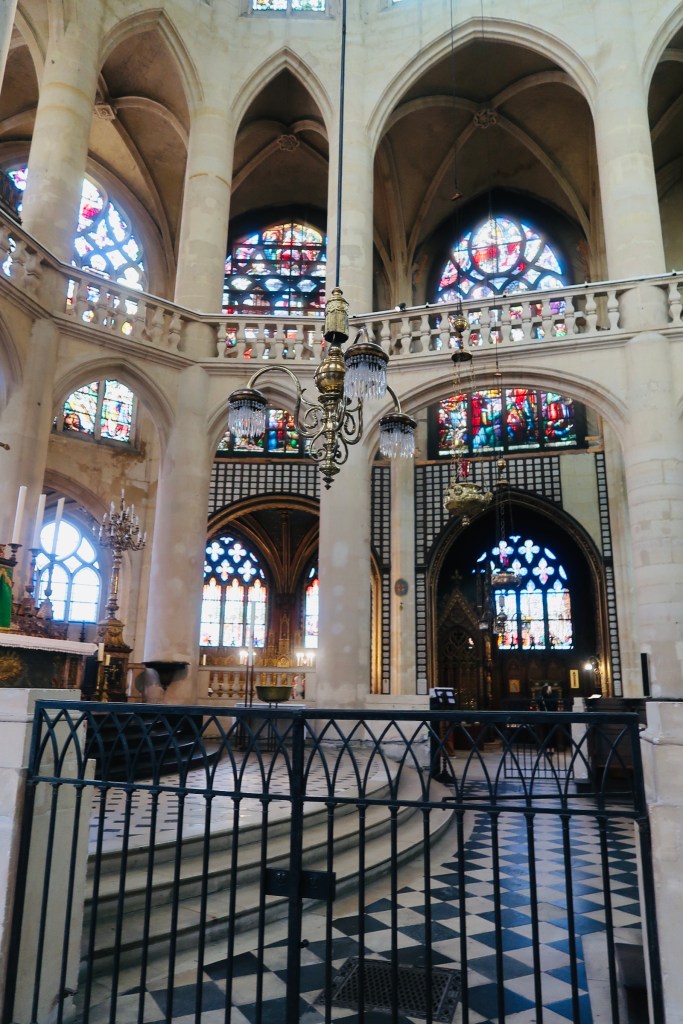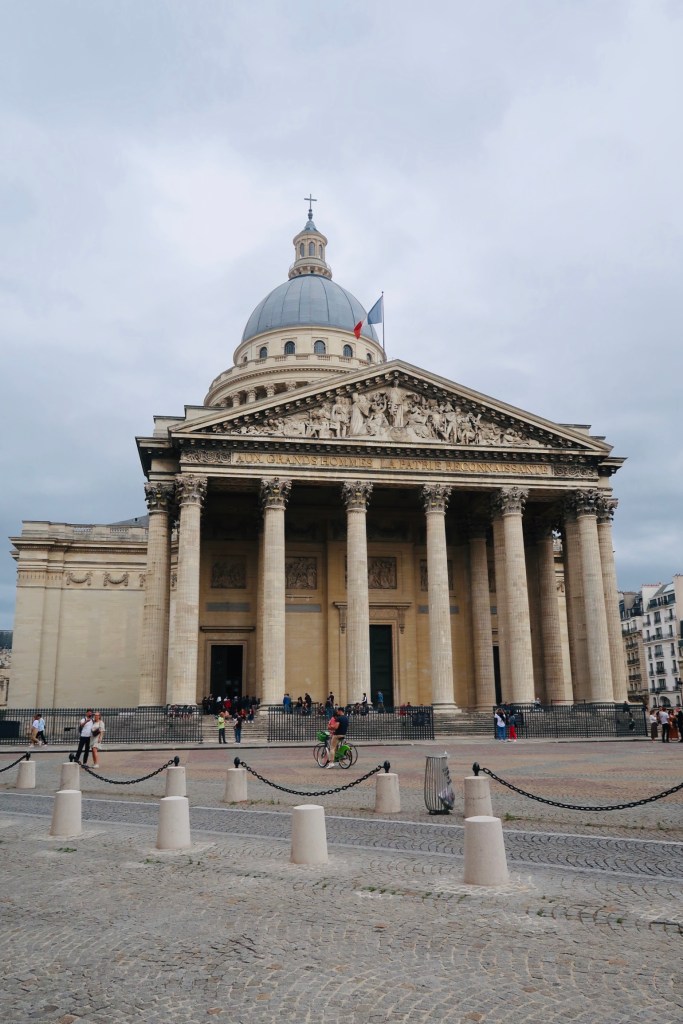It is time for the second stop on our Summer Holiday, the much-anticipated Paris- city of love. I am going to divide our time in Paris up into two different posts (this has been determined after editing this together- it’s simply too much for one) and I am going to be splitting them by day for Paris (the rest should be fine simply by location).

So, Paris, the city of Love. This was just a short few hours’ drive from Luxembourg City, so we looked around to see if there was anything on our route that we wanted to see. We had planned on 3 nights in Paris (giving us 2 full days, plus some, to see Paris). My husband managed to find a World War 1 battleground and memorial that he wanted to check out, so we decided to make a little lunchtime stop.
Our first stop on this section of our holiday was Fort Douaumont. This fort is the largest and highest of the ring of positions that protected Verdun France. This particular fort has quite the history of capture and re capture in 1916 after being determined ineffective. The fort itself dates back to the late 19th century and a lot of the fort is actually tunnels and an underground network. During a tour you are able to walk through the hallways and listen to the history of the fort, how it was used by both the French and the Germans, as well as see some of the actual fire power that was used at that time. You can then walk above the fort and see the ramparts and exterior gun positions.
While at Fort Douaumont, you are able to do a couple other things as well, such as walk the trenches and see one of the battle positions (which now serves as a memorial). You are also a very short drive (like a couple minutes max) from the Douauomont Ossuary, which is a war memorial from the Battle of Verdun in World War 1.
A rather large monument, legend says that it was designed to appear as a sword being shoved into the ground and you are able to climb the tower and see a panoramic view of the cemetery and grounds. The small windows on the exterior contain alcoves that hold skeletons of unidentified soldiers from both sides of the war. The cemetery is the largest of the first World War in France.
We spent several hours in the area exploring and learning before hitting the road again and heading to Paris. We did not actually make it into the city until well into the evening, so we chose to simply check in and have an easy evening in the hotel unpacking and resting.
We divided Paris up into two different sections, with an invisible line drawn somewhere in the vicinity of the Louvre and Notre Dame Cathedral. So, that first day was full of metro rides and “exterior” sight-seeing (Covid-19). While the second day was a more walking locations that were closer to each other.
We started off at the Sacre-Coeur Basilica in the Montmartre area. This is the second most visited monument in Paris, a Roman Catholic church that stands at the summit of the highest point in the city. Built at the end of the 19th century/beginning of the 20th century with the beginning of perpetual adoration in August of 1885. It boasts a dome of 83.33 meters, a bell tower of 84 meters, and an annual visitor/pilgrimage of 11 million.
I have to say, this basilica was incredible, not just from an architectural exterior, but also its interior manages to take your breath away. Inside, there is a mosaic of Christ in Glory which is one of the largest in the world. It is truly amazing to see. We did climb the dome and were treated to an incredible view of the entire city. You are able to see everything, and it was a real treat to feel like an eagle at the top.
From the Montmartre area we started to work our way back into the city hitting some of the hotspots that we wanted to see. I will make a note, we did not hit Moulin Rouge as it was closed due to Covid-19. We knew we were somewhat “short” on our time, so rather than hop the metro, just to hop the metro again, we decided to skim a few things. However, we did hit the Palais Garnier.
The Palais Garnier or Opera Garnier is THE Paris Opera house (think like Phantom of the Opera). Seating just under 2000 it was commissioned by Emperor Napoleon III in the late 19th century. This is one of the mast famous (if not the) Opera houses and has inspired so many other Opera Houses and buildings (including the Thomas Jefferson building at the Library of Congress!). Of the era it was the most expensive as well as a masterpiece of the time. Now, if I thought I cried/got emotional at the Globe Theatre in London, it was nothing compared to how I felt at the Opera house. The Palais Garnier is easily the most beautiful, incredible, ostentatious, singularly “French” thing I’ve ever seen. It’s just mind blowing. From the Grand Staircase of white marble and painted ceilings, to the auditorium and the bronze and crystal chandelier, to the Grand Foyer with its gold and yellow opulence, there is not a single place that doesn’t just amaze and leave one breathless.
If those things weren’t enough, I wandered down a quiet corridor and came upon something even more incredible. The Paris Opera House is also home to the Bibliotheque-Musee de L’Opera de Paris, or the Paris Opera Library-Museum and oh my goodness, was it heaven to walk through the walls and walls of books. Of course, most of these items are archival items including books, music scores, autographed items, photographs, and other “paper” items (a total of 600,000 documents!). There is also a museum attached to this section that displays paintings, costumes, scenery and scale models of sets. It is incredible (and it was like a little quiet slice of heaven in heaven).
From the Opera House we took a quick metro bus over to The Louvre Museum. Now, The Louvre was not in fact open, it was scheduled to re-open (post Covid-19) the Monday that we were leaving so we didn’t get a chance to go inside. Instead we were able to see the pyramid, and the square without the crowds of people, which was pretty cool anyways.
I won’t hark on about this stop too much as we weren’t really able to visit the museum, but I will say that the controversy that surrounded building the pyramid entrance is actually quite interesting. Those who were against it had varied arguments from aesthetic reasons to being against the President at the time (along with the more important of the history of the Pyramid itself- not this glass design). Regardless, it was commissioned, and it provides a striking entrance and separates the Louvre from being “just another museum in another ‘old’ building” (besides the fact that some of the famous pieces of artwork reside there).
This stop also gave us another glimpse of the Eiffel Tower as well as a smaller version of the Arc de Triumph, the Arc de Triomphe du Carrousel. From there we decided to walk over the Notre Dame. I will say, obviously, we didn’t get to go inside. However, it was still important to me to see it as this is a historic moment for the cathedral.
The Notre Dame de Paris is a cathedral dating back to construction in the 12th century. It has gone through quite the long and storied history, but has only been desecrated once in the 1790’s during the French Revolution. One of the early restorations projects occurred in the 1800’s shortly after the Hunchback of Notre Dame was published. It was cleaned of soot and grim from the world wars in the 1960’s and then again in the 1990’s. During the most recent restoration in 2019 the roof caught fire and burned for 15-16 hours causing major damage. The Notre Dame is the Archdiocese of Paris, has an honorary title of minor basilica, and is the most visited monument in Paris.
When we visited we could see not only where the destruction occurred, but you are also able to see quite a lot of the restoration/rebuilding part of it. It’s almost like watching a surgery in action as you can see inside a lot of the vaulting and wooden roofing. The fencing all around the Cathedral itself depicts the fire, the damage (both internal and external), plans for rebuilding and what the rebuild looks like. So, even though we weren’t able to go in and revel in the beauty, I still felt like it was incredible to see.
After the cathedral, we walked across the river to go to Shakespeare and Company. If you are a book lover (and a traveler) you probably have heard of Shakespeare and Company in some form.
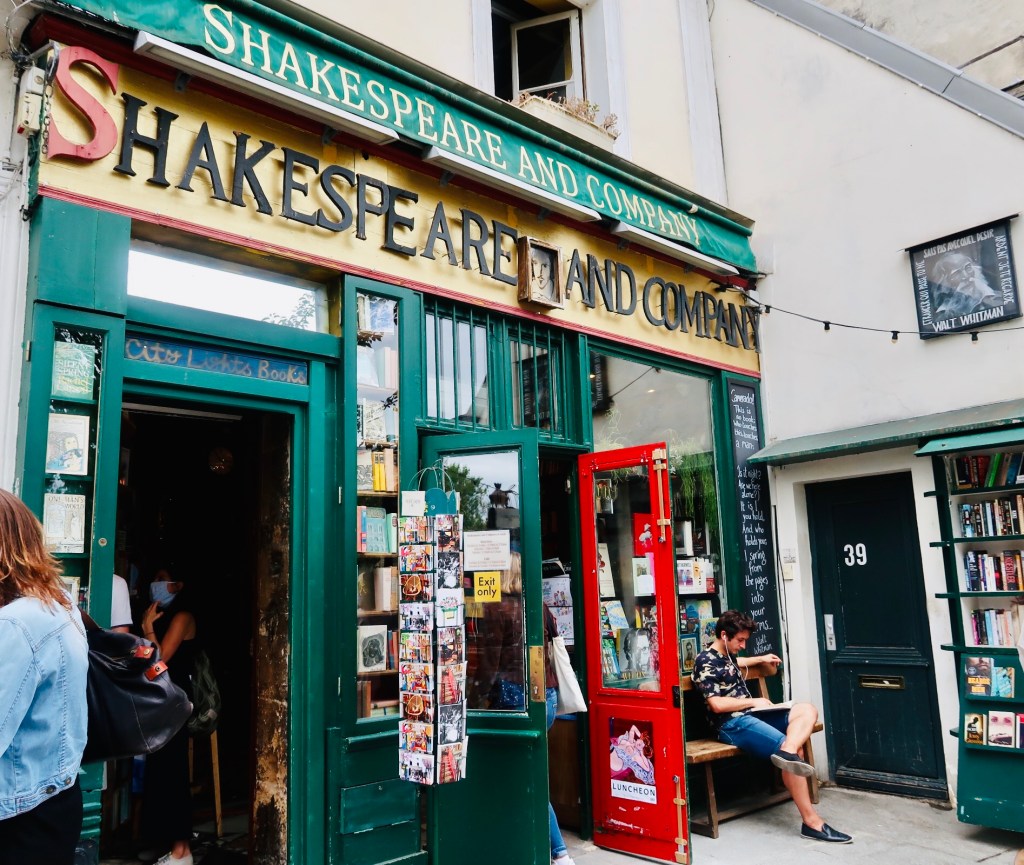
It is an English bookstore on the Left Bank of Paris, right across from the Notre Dame. Opened in 1951 its location originally was home to a monastery. In 1964 the owner, George Whitman changed the name to Shakespeare and Company (on the 400th anniversary of Shakespeare’s birth) after another bookseller that he admired, Sylvia Beach- owner of the original Shakespeare and Company. Not only is the store and incredible independent bookstore (which you can shop online at HERE), but it is also a community. Tens of Thousands (the website quotes 30,000, but I’m sure it’s grown in size) of writers and artists have stayed in the shop and worked. Called Tumbleweeds, they are asked to do several simple things: read one book a day, help out in the shop, and write a one-page autobiography. These are collected and then placed in the shops’ archive. These days the shop has grown from its humble beginnings and hosts the Paris Literary Prize, a literary festival, as well as weekly literary events. It was a dream come true to walk through the store, admiring all of the books on the shelves (and buying a few of them…) and just take in the atmosphere.
From Shakespeare and Company, we simply wandered the streets of Paris for a little bit longer. We were able to view the Place Sainte-Genevieve, The Pantheon, and the Eglise Sainte-Etienne-du-Mont.
Then it was off to dinner and back to the hotel to rest up for Day 2.



